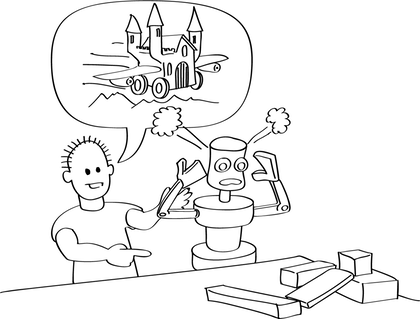Harold the Robot
In this activity children simply give directions to a “robot” (either an adult or another child) and find out which instructions the robot is able to follow, and how their instructions are taken literally.
This simple but effective activity was invented at a workshop for Postgrad Computer Science students in April 2008.
Contributed by: Richard Nelson, Jason Clutterbuck, Sebastian Höhna, Stefan Marks, and Wilson Siringoringo.

Activity description (PDF) #
Related Resources #
- A popular related activity is the sandwich making challenge. Phil Bagge demonstrates it well; in the US it’s often referred to as the PB&J making exercise.
- Try Engineering has an activity called Build Your Own Robot Arm where students will explore design, construction, teamwork, and materials selection and use. The aim is to develop a robot arm using common materials. Download the Full Lesson Plan and Student Worksheets.
- Karel the Robot website with fundamentals and activities is an excellent method for introducing students to computer programming is described by Richard E. Pattis in his book titled Karel the Robot. By initially limiting the student’s language repertoire to easily grasped imperative commands whose actions are visually displayed, the Karel approach quickly introduces students to such concepts as procedures and the major control structures. Although originally based on Pascal, the Karel approach has been used successfully with several different computer programming languages. These pages describe a version of Karel that uses the C / C++ language.
Curriculum Links #
Great Principles of Computer Science #
- Automation
- Computation
